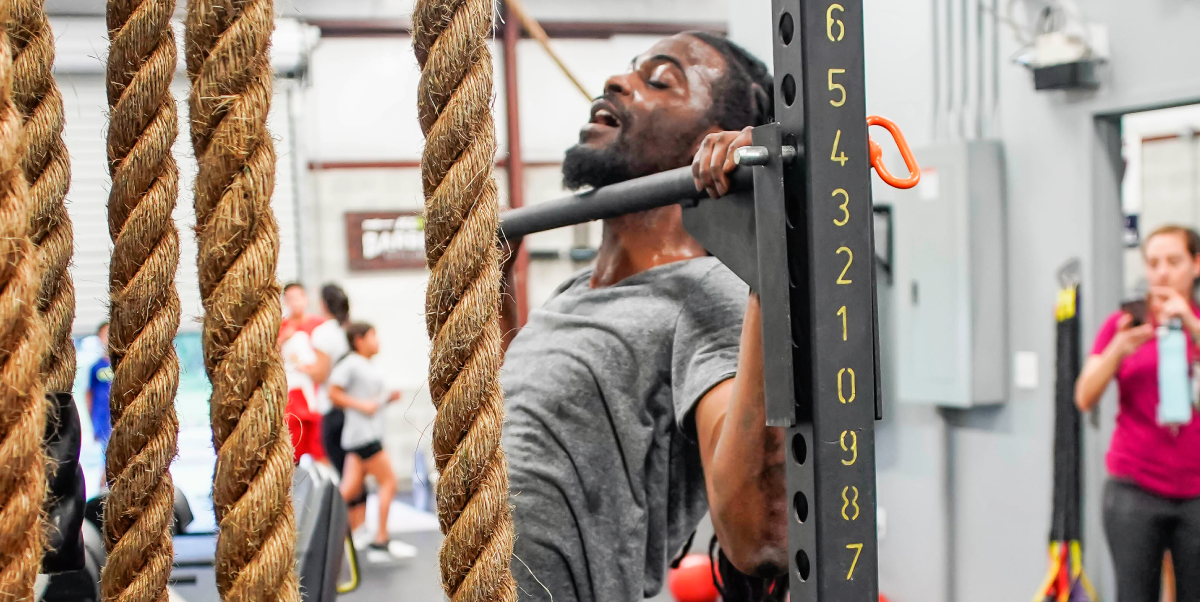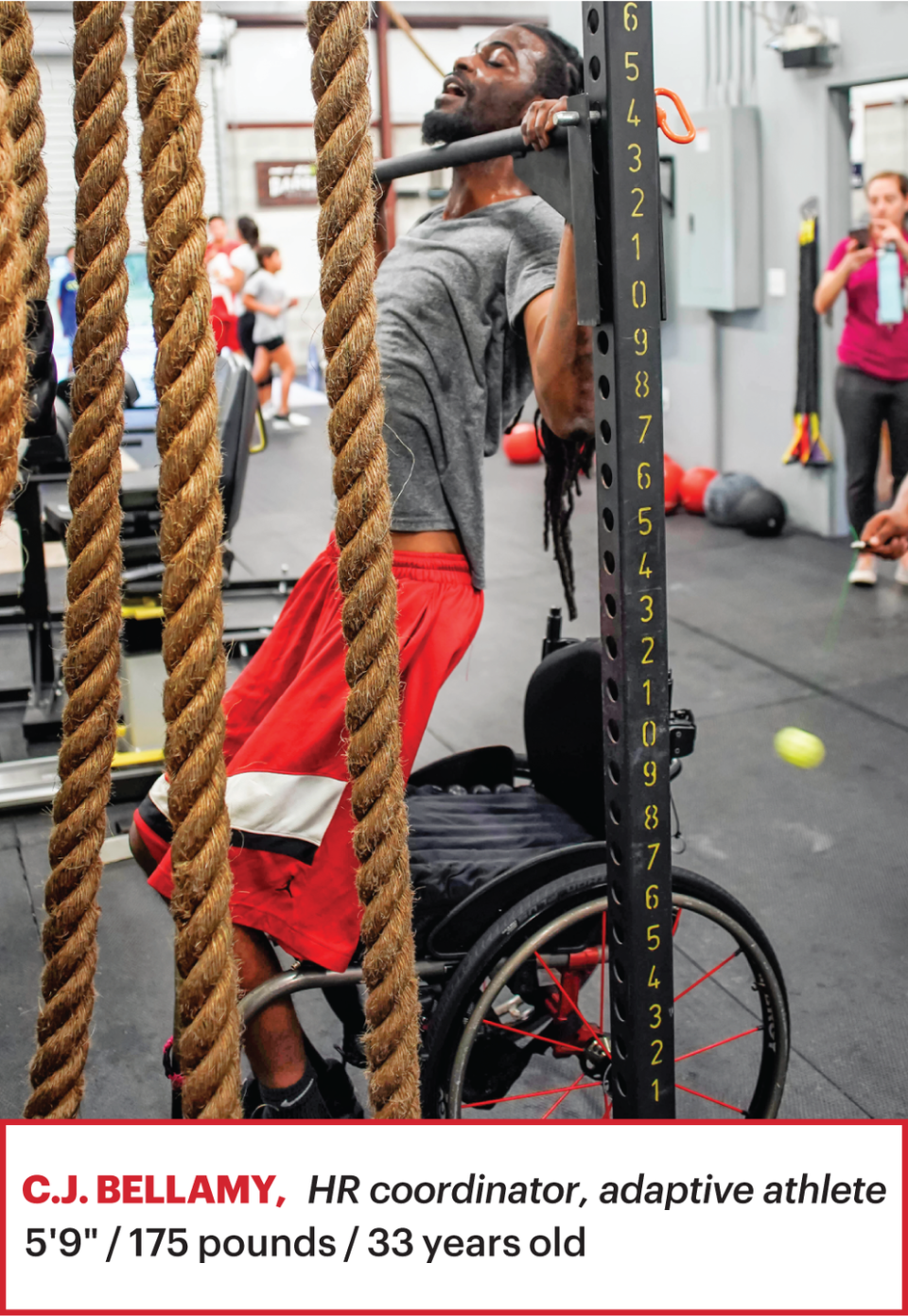After I Was Paralyzed by a Gunshot, CrossFit Gave Me My Life Back


This is one in a series of 12 stories that explores the role of strength in modern life.
One hot Orlando night in 2006, 17-year-old C. J. Bellamy was out on the town with his basketball team when they ran into some punks, one of whom took out a .45 and squeezed the trigger. A lone bullet entered Bellamy’s shoulder, nicked his spine, and exited his chest. He hasn’t moved his legs since.
“When they first told me I was going to be in a wheelchair, I was like, ‘Nah, I’m going to be walking back on the basketball court doing my thing again soon,’ ” says Bellamy, now 29. “But that didn’t happen, and my mind went to dark places for a while. I stayed in my house. I didn’t do anything at all.” But soon his family was on him: WTF are you doing, man? You’re partially paralyzed, not dead.
So he rolled himself out into the world and found he could still ball, picking up wheelchair basketball. He then began trying out local gyms, ending up at Orlando’s SOCF CrossFit, which also had a program that specializes in training athletes with spinal-cord injuries.
“I was already doing basic pullups and stuff, but they introduced me to so many different new movements,” says Bellamy. During his first workout, he learned how to do a ring muscleup, where he’d pull himself from the floor to shoulder level with a pair of hanging gymnastics rings and then explosively flip his body above them. Next he practiced clean and jerks, bar overhead presses, snatches, and more. It was at once a physical assault and a revelation.
“From then on I’ve just been pushing myself to see how far I can go,” says Bellamy. His pullup maximum, for example, has gone from 5 to 20, while his numbers for exercises that carry over to his everyday life keep rising. “It’s giving me more energy and making daily things easier-transferring in and out of my wheelchair to my office chair or car, lifting things, moving around.”
When he’s not training, he explores the world with his three-year-old niece. “She loves to run around and go outside,” he says. “Training has given me the strength and endurance to keep up with her-I can push through a lot of areas that aren’t really handicap accessible.” And that’s turned the tables: Bellamy is now the one pushing his family to get outside, be more active, and meet people, he says.
“Some people in a wheelchair aren’t social because the wheelchair is like a barrier,” he says. “But I feel more comfortable, and I’m more social now. In a lot of ways, I’m more able than I’ve ever been.”
('You Might Also Like',)

